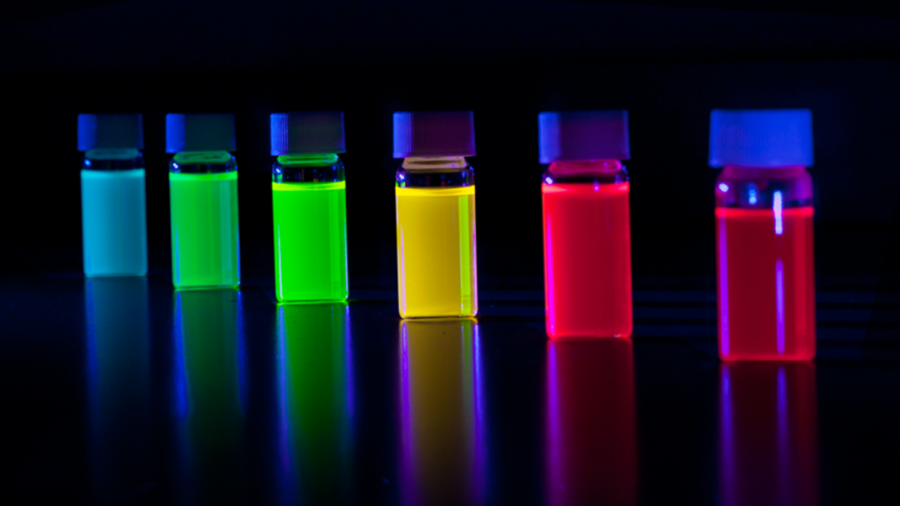Quantum Dot LCDs: What to Expect in 2020
Quantum dot liquid crystal displays (LCDs) are currently available in a range of formats in the consumer electronics industry. While different manufacturers tend to use their own proprietary marketing vernacular to define their respective technologies, most quantum dot LCDs utilize what is known as a red-green quantum dot enhancement film (QDEF). This optically-active layer, mere micrometers (μm) in thickness, is responsible for changing the entire dynamic of the consumer display market and ushering in a new generation of premium, large panel televisions.
So, what can consumers and developers alike expect from the quantum dot LCD industry in 2020 and beyond?

Quantum Dot LCDs: A Retrospective Look
Although electronics engineers have tested many different approaches to QDs in displays since quantum dots were first explored as a potential light source in the late 1980s and throughout the ‘90s, film-type integration of quantum dots is now the golden standard for LCD technology. Despite offering wider colour gamut (WCG) capabilities, higher peak brightness (+2,000 nits), and thus greater coverage of coveted colour spaces (Rec.2020 and DCI-P3) than any competitor technology, many manufacturers still consider film-type integration of quantum dots an intermediary step on the road to true next-generation technologies such as quantum dot colour filters (QDCFs) and direct-view quantum dots.
QDCFs: A Long-Term Development
In many respects, we agree with the sentiment that film-type quantum dots are an intermediary technology, but the progress of QD color filters has been limited by several technical and material challenges. Pioneering research using cadmium-free perovskites has re-invigorated development efforts in this area, but optimistic forecasts predict that thermally-stable QDCFs and direct-view quantum dots will not be available for consumer displays for the foreseeable future.
Likely Quantum Dot Developments in 2020
Short-term developments in the quantum dot LCD market are expected to hinge on the efforts of major proponents of the technology. Samsung Electronics, a founding member of the now-defunct QLED Alliance, has reportedly been working on hybridizing organic light-emitting diode (OLED) panels with their QDCF technology. Yet it is increasingly unlikely that this revolutionary concept will be unveiled within the next year. Speaking to TechRadar earlier in 2019, a Samsung spokesperson said:
This reflects positively on the short-term outlook of quantum dot LCDs, which form a core part of Samsung’s line-up of premium consumer displays. TCL, another member of the QLED Alliance, has similarly diverted financial efforts to developing display technologies based on blue OLED panels with red-green quantum dot emitters. However, this is another development that is unlikely to occur in 2020. Instead, TCL has opted to push its flagship range of value quantum-dot enhanced QLED Roku TVs in North American markets, having achieved inordinate success in China since their release. Hisense, OnePlus, and Vizio are just a selection of other well-known brands that have increased their footprint in the global quantum dot LCD market throughout 2019.
In conclusion, consumers and manufacturers can expect more from quantum dot LCDs in 2020 with respect to them carving out a greater share of the display market. While greater paradigm shifts in terms of device architecture are projected for the long-term, the sudden influx of new manufacturers and existing manufacturers doubling-down on their efforts to bring premium quantum dot-enhanced displays to consumers is a significant change in and of itself. When we wrote about how quantum dot displays are changing the display market in 2018, we highlighted the need for quantum dot manufacturers to capitalize on their lower manufacturing costs compared to expensive OLED panel fabrication. This has proven instrumental in the new crop of value-driven quantum dot-enhanced TVs, providing increased market saturation and establishing quantum dot LCDs as a true contender to OLED technology.
Avantama: Quantum Dot Suppliers for LCDs
Avantama is one of the world leaders in the development and supply of thermally-stable perovskite quantum dots for a range of applications, including consumer electronics. If you would like to learn more about utilizing quantum dots in 2020 and beyond, simply contact a member of the Avantama team today.
References: